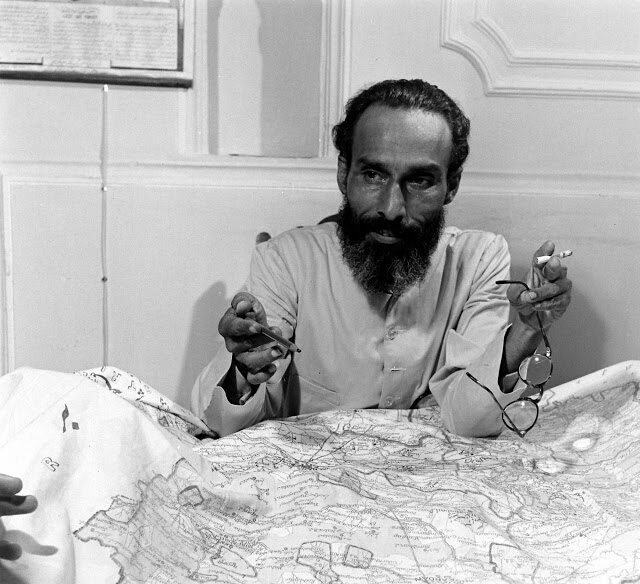By Vijay Burgula
Hyderabad:13th September 1948 which marks the beginning of Police Action must have been a day of heartbreak for nationalist minded Muslims such as Fareed Mirza in Hyderabad as the Indian Army launched Operation Polo.
The context: Situated in the heart of British India, the last Nizam’s (Mir Osman Ali Khan) state of Hyderabad was the largest princely kingdom comprising of Kannada, Maratha and Telugu (Telangana) speaking regions with an 84% Hindu population that had an incipient modernizing government under the last two Nizams with 70% of government employment going to Muslims.
A nascent Muslim middle-class and intelligentsia flourished and nationalist, progressive and radical Muslim leaders emerged. Fareed Mirza was a nationalist Muslim who was influenced by the writings of Mahatma Gandhi and former and first Indian Prime Minister Jawaharlal Nehru.
Mirza was appointed as a Tahsildar in 1941 but a year later in 1942, his nationalist passion propelled him to go to Bombay to see the passage of the historic Quit India Resolution of the All India Congress Committee (AICC). Posted in the Marathwada region of Nizam’s Hyderabad, Fareed Mirza had the opportunity to meet Gandhiji in Parbhani in the middle of July 1944.
He also attended the AICC Session of 1945 in Bombay. As a Tahsildar and eye witness to the depredations of the Razakars (the militia led by Majilis-e-Ittehadul Muslimeen president Qasim Razvi) in the towns and villages of the Marathwada region, Fareed Mirza resigned after a number of his protests at communalised governance went unheeded. Razvi, through inflammatory speeches, managed to polarize the situation after becoming MIM chief in 1944.

Back in Hyderabad, Mirza along with a number of other like-minded individuals were increasingly concerned at what they perceived to be a self-destructive path that the Nizam had taken, with regard to the political turmoil in the state and Razakar atrocities. An open petition/letter was drafted together by Baker Ali Mirza, Fareed Mirza, and Mulla Abdul Basith. Other signatories were Nawab Manzoor Jung, Abu Sayeed Mirza, Sajjad Mirza and Ahmed Mirza.
The petition was originally published in the Urdu Daily ‘Payam’ on August 13, 1948 and it was later signed by Mohd Hussain Jaffery and Hussain Abdul Muneem. Later the letter was also printed in the Urdu newspaper ‘Imroze by its editor Shoaibullah Khan, who was murdered by the Razakars on August 22 (of which my father the late B. Narsing Rao was an eye-witness), prompting Nehru to remark that things had become so unsafe in Hyderabad that even Muslims could not write without getting murdered.
The petition acquired fame in Hyderabad folklore as the “letter written by the 7 Mirzas” when there were actually 5 Mirzas among the 7 Muslims who originally signed the petition. The letter wanted the Nizam to disband the Razakars and set up “a government which should not only have the confidence of the people but should also be responsible and answerable to them”.
This information comes from the monograph published by Fareed Mirza, “Pre and Post Police Action Days in the erstwhile Hyderabad state: What I Saw, Felt and Did”. However, what happened eventually happened was that after nearly a year of deliberations after Indian independence on August 15, 1947, the Indian government lost its patience and finally sent its army to merge or annexe Hyderabad to India.
Operation Polo, which is popularly known as Police Action witnessed widespread violence: first through the Razakar militia (headed from 1946 to 1948 by the fanatical Qasim Razvi, who was also president of the Majlis-e-Ittehadul Muslimeen), and later in targeted killings of tens of thousands of Muslims during and after the Indian Army took over post September 17, 1948.
Those were the outcomes of the politically and communally charged milieu then, but a lot more exists in between that also transpired, especially due to the Communist Party of India (CPI)-backed ‘Telangana Armed Struggle’ (1946-51). It was a peasant rebellion that took place against state-appointed Jagirdars; the landholding class that comprised both Hindus and Muslims. More than the Congress, it was the CPI which had hold in the rural areas in 1948 and well beyond.
(The author is a farmer, and documentary maker from Hyderabad)
